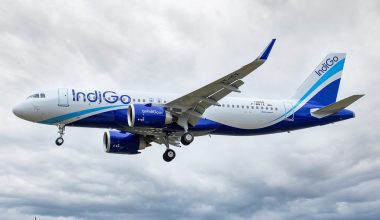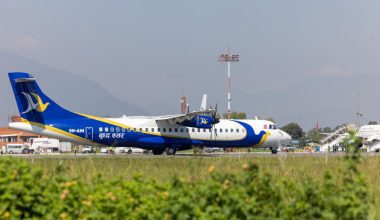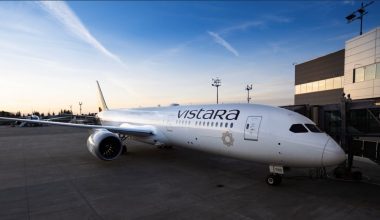Asia’s prime adventure playground, Nepal, is nirvana for travelers willing to experience the ultimate adventure travel. Apart from the towering hulks of 8000+ high mountains, Nepal woos visitors with a variety of adventurous sports that offer a once-in-a-lifetime experience. One such extreme sport is paragliding, the purest way to venture into the wild blue yonder without using a motor or an engine. Paragliding is a recreational adventure sport of flying up high in the sky by running off the slopes with free parachutes. Nepal offers a paragliding pilot course for experienced adventurers who seek the adrenaline of flying paragliders on their own while enjoying the bird-eye view of verdant valleys, white gushing water streams, rolling green hills, etc. Here’s detailed information on the paragliding pilot course in Nepal.

Getting a paragliding pilot course
Pursuing a paragliding pilot course is necessary to acquire the Paragliding Pilot License that allows you to fulfill your personal flying needs or operate commercial tandem paragliding for customers. The paragliding pilot course includes basic and advanced training and covers theoretical and practical exercises with licensed instructors. You must have Paragliding Travel insurance, a government flying permit, and an APPI membership to do the paragliding pilot course.
Paragliding pilot course content
The road to becoming a paragliding pilot starts with the Paragliding Beginners Course, which is designed to develop flying skills and confidence among aspiring pilots to let them explore the sky and take wings off the ground. Varying according to paragliding schools, Beginners Course can extend from 5 to 15 days and usually includes the basics of paragliding and in-depth training to become an independent solo pilot and gain the ability to fly without supervision.

As a beginner in the paragliding pilot course, you will learn basic knowledge of equipment, meteorology, safety equipment, landing zones, weight shifting, communication, etc., and practice solo + tandem flights. Some paragliding schools also offer fast-paced private courses to qualify you as an APPI Solo Paragliding Pilot.
Furthermore, there are three stages of paragliding pilot courses for the amateurs-Thermalling course, the cross-country paragliding course, and the ACRO and SIV course. Such courses follow the Para-Pro syllabus designed by Federation Aeronautique Internationale (the world governing body for air sports), resulting in the FAI-authorized license recognized in every nation by an airport association.
- Thermalling course
Paragliding thermalling is a 3-5 days course specializing in thermal flying to improve and reinforce the fundamental pilot knowledge and skills to make the most of the lift and be able to do longer flights. You will be provided with a radio for communication in finding, catching, and staying in thermals. Dedicated to beginner pilots, the thermal course includes theory lessons to understand the thermal sources, triggers, and dynamics and practical training with two daily flights supervised by licensed instructors.
The longer you are airborne, the more you will learn paragliding; the flying session is subject to weather conditions. You must be at least 18 years of age and have Paragliding Travel Insurance covering medical and repatriation to undertake thermalling course. Besides, Completion of the Beginners Course (P3-level) is also a requirement to indulge in thermalling course.
The standard cost of a thermalling course is 500 Euros but getting the radio and equipment will charge you an extra 175 Euros. The cost covers all class training and flight training sessions, transportation to take-off and pick-up from the landing zone, accommodation, three meals per day, and a flying permit.
- Cross-country course
After mastering the skills of ridge soaring and thermal flying, the next stage in the paragliding pilot course is Cross-Country Course (XC). Cross-country flying is a long-distance flight course in unfamiliar surroundings that requires a more advanced flying technique. Like a thermally course, XC is a 3-5 day paragliding course but involves more intensive learning about thermals, local and general climate, emergency procedures, radio guidance, etc.
XC involves adventurous flying from the familiar environment of the ridge to the unfamiliar mountain surroundings requiring the symbolic cutting of ties from the hill. Along with practice, pilots must maintain peak mental status to beat the challenge of cross-country flying. Along with several theory classes, students will be accustomed to mountain flying and learn more about flying conditions, thermal strength, XC route, retrieves, etc. Sarangkot ridge is the ideal venue for XC flying in Pokhara because of its suitable weather conditions, easy accessibility, mesmerizing views, and easy retrieves.
To be eligible for a cross-country paragliding course, you must cross the minimum age of 18 years and possess a valid Beginners Course License and paragliding insurance. The additional requirement is at least 100 hours of air time. The 5-day XC Paragliding Pilot Course can cost around 500 Euros covering your training fees, flying permit, transportation and accommodation fee, etc.
- Acrobatic and SIV course
Much more than just a simple tandem outing, the acrobatic course offers the best way to discover paragliding and its extreme maneuvers in flight. The course is designed to learn the art of pulling tricks and stunts with the wings and the limit of these wings. Usually spread for three days, the paragliding acro course is about pure glider control. It involves several maneuver exercises like spiral dive, full stall, wingover, SAT, asymmetric spiral, full dynamic stall from the wing over, looping, mac twist, misty flip, asymmetric SAT, etc.
Moving the ladder up into advanced paragliding pilot training, there’s SIC (Simulation d’Incident en Vol) course which deals with wing control in unexpected scenarios, including turbulences, canopy collapse, spins, etc. Designed to improve your all-around flying ability, the SIV course increases the level of safety in flying by offering advanced safety measures, controlled collapsing of the wing in stages over water, procedures to recover from certain scenarios, emergency techniques, etc. The 3-day SIV course is held in a secure environment above Fewa Lake, flying from Sarangkot hill.
The minimum requirements to join the Acrobatic paragliding course:
- Minimum age of 18 years
- Possess valid Beginners Course Certificate and SIV Course Certificate
- Clocked in a minimum of 100 flights
- Hold a valid Paragliding Travel Insurance
A standard charge of 500 Euros is applicable for 3-day Acro and SIV courses, including training fees, transport, and fees for boat rescue and emergency teams.
Duration of paragliding pilot course
Depending on paragliding schools and the level of study, the duration of the paragliding course may vary from several days to months. While specific paragliding courses last for certain days, the full course usually takes two years to complete- from basic to advanced professional pilot training. Starting from the beginning course, you will gradually pave the paragliding pilot path to a progressive level and further to thermalling to cross country to SIV/Acrobatics before reaching the final milestone of Tandem Pilot/Instructor.

As a tandem pilot, you are certified to operate commercial paragliding in which you and your client will enjoy the thrill of gliding in the sky like a bird and create a lifelong memory to cherish forever.
Who provides a paragliding pilot course?
Civil Aviation Authority of Nepal (CAAN), the government agency for the safety oversight of civil aviation activities, has delegated certain functions to the authorized Nepalese agencies to regulate recreational aviation activities, including paragliding in Nepal. Registered recreational aviation operators can issue, suspend, or revoke paragliding pilot licenses in Nepal. The Nepal Air Sports Association, Blue Sky Paragliding, and Babu Adventures Paragliding School are some licensed agencies that provide official education and training about paragliding in Nepal.
Also Read: Aviation recreational activities in Nepal
CAAN introduced the concept of a paragliding license in 2015 to manage the paragliding sport systematically and help control tax evasion and illegal flights. Before this, there was no provision for authentic licenses in Nepal.
Provision for flying solo in Nepalese skies
As CAAN controls the airspace of Nepal, you must obtain a flying permit to soar in Nepalese skies, which requires a valid pilot license, insurance, and minimum APPI Solo Pilot certification. It is also essential to get a membership in NAA.

You must earn a tandem license to work as a paragliding pilot in Nepal. In the case of a foreign paragliding pilot holding a foreign license, labor approval is required to work in Nepalese paragliding companies. As per the rule, CAAN -approved agencies can recommend work permits and non-tourist visas for such holders.
Best places for paragliding in Nepal
Pokhara is hands down the best destination in Nepal to get the most-thrilling tandem paragliding experience. Similarly, Nepal’s other majestic paragliding places are Chapkharka, Godavari, Phulchoki, Bandipur, and Kot Danda. Paragliding flights usually start around 10:00 am and continue at noon and 2:00 pm, making three flights per day. Morning flights are stable, while noon usually consists of turbulent flights due to the formation of thermals. Tandem flights are available but take solo flights to fly on your own by qualifying yourself with a paragliding pilot course.






